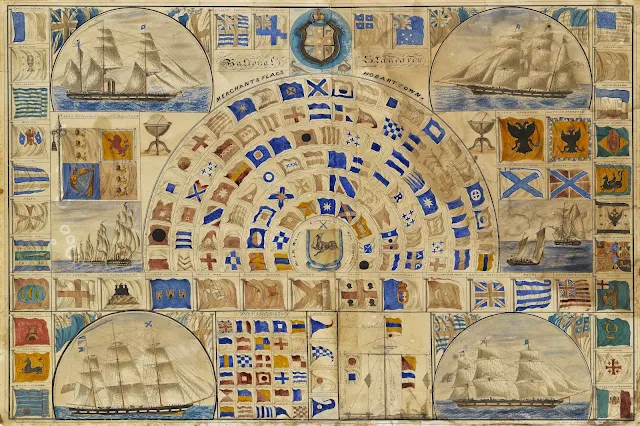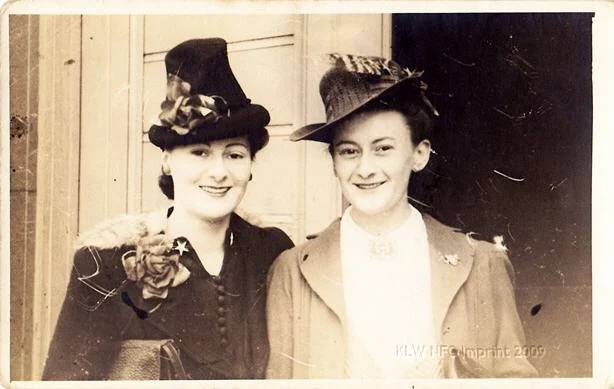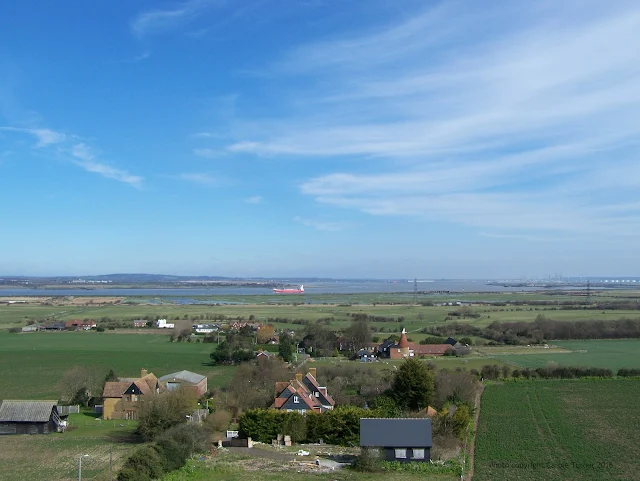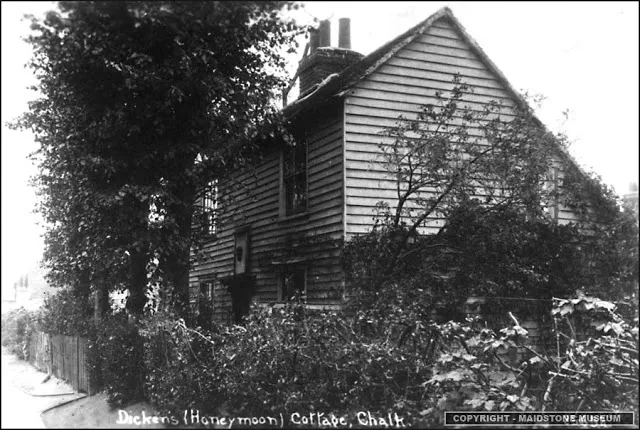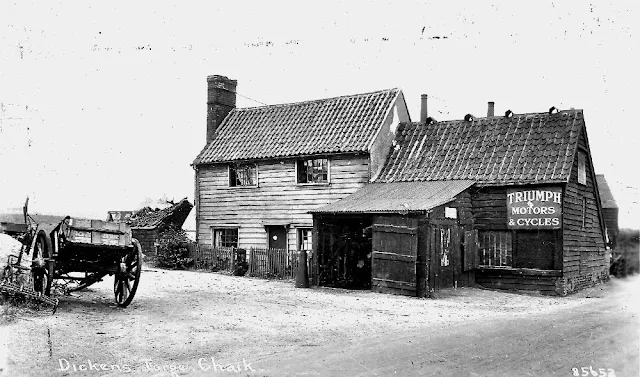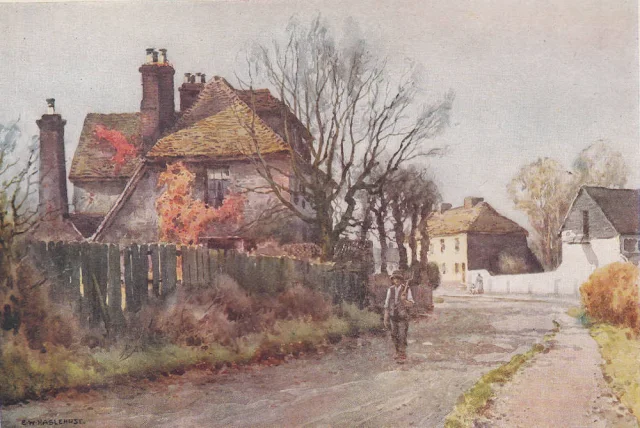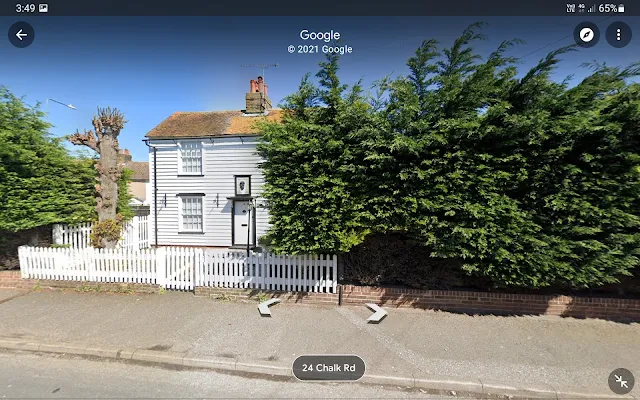CAPTAIN EDWARD GOLDSMITH (1804-1869) merchant mariner
IMPORTS of exotic flora and bloodlines 1850s
EXPORTS of indigenous plants, birds and animals 1860s
FRANK HAES stereogram of the thylacine London Zoo 1865
 Glover, John. Hobart Town, Taken from the Garden Where I Lived, 1832 / by John Glover (1832).
Glover, John, 1767-1849
Painting oil on canvas - 76 x 152 cm, State Library of NSW
Link: https://www.sl.nsw.gov.au/collection-items/hobart-town-taken-garden-where-i-lived
The Pretty Views of Hobart 1850
Glover, John. Hobart Town, Taken from the Garden Where I Lived, 1832 / by John Glover (1832).
Glover, John, 1767-1849
Painting oil on canvas - 76 x 152 cm, State Library of NSW
Link: https://www.sl.nsw.gov.au/collection-items/hobart-town-taken-garden-where-i-lived
The Pretty Views of Hobart 1850
From the deck of HMS
Havannah approaching the port of Hobart, Van Diemen's Land (Tasmania) on 26th December, 1850, deputy adjutant Godfrey
Mundy made these observations:
The extraordinary luxuriance of the common red geranium at this
season makes every spot look gay; at the distance of miles the sight is
attracted and dazzled by the wide patches of scarlet dotted over the
landscape. The hedges of sweet-brier, both in the town-gardens and
country-enclosures, covered with its delicate rose, absolutely monopolize
the air as a vehicle for its peculiar perfume: — the closely-clipped mint
borders supplying the place of box, sometimes, however, overpower the
sweet-brier, and every other scent of the gardens.
Every kind of English flower and fruit appears to benefit by
transportation to Van Diemen's Land. Well-remembered shrubs and
plants, to which the heat of Australia is fatal, thrive in the utmost
luxuriance under this more southern climate. For five years I had lost
sight of a rough but respected old friend — the holly, or at most I had
contemplated with chastened affection one wretched little specimen in
the Sydney Botanic Garden — labelled for the enlightenment of the
Cornstalks. But in a Hobart Town garden I suddenly found myself in the
presence of a full-grown holly, twenty feet high and spangled with red
berries, into whose embrace I incontinently rushed, to the astonishment
of a large party of the Brave and the Fair, as well as to that of my most
prominent feature!
The fuchsia, the old original Fuchsia gracilis, attains here an
extraordinary growth. Edging the beds of a fine garden near where I
lived, there were hundreds of yards of fuchsia in bloom; and in the
middle of the town I saw one day a young just-married military couple
smiling, in all the plenitude of honey-lunacy, through a cottage-window
wholly surrounded by this pretty plant, which not only covered the entire
front of the modest residence, but reached above its eaves. And this
incident forces on my mind a grievous consideration, however out of
place here, namely, the virulent matrimonial epidemic raging lately
among the junior branches of the army in this colony. “Deus pascit
corvos,” the motto of a family of my acquaintance, conveys a soothing
assurance to those determined on a rash but pleasant step. But who will
feed half-a-dozen ravenous brats is a question that only occurs when too
late! At this moment the regimental mess at Hobart Town is a desert
peopled by one or two resolute old bachelors and younger ones clever at
slipping out of nooses, or possessing that desultory devotion to the sex
which is necessary to keep the soldier single and efficient. Punch's
laconic advice “to parties about to marry,” which I have previously
adverted to, ought to be inserted in the standing orders and mess rules of
every regiment in H.M.'s service.
Here, too, to get back to my botany, I renewed my acquaintance with
the walnut and the filbert, just now ripe, the Spanish and horse-chestnuts,
the lime-treewith its bee-beloved blossom, and the dear old hawthorn of
my native land. As for cherryand apple-trees, and the various
domesticated berry-bushes of the English garden, my regard for them
was expressed in a less sentimental manner. I defy schoolboy or
“midship-mite” to have outdone me in devotion to their products,
however much these more youthful votaries may have beaten me in the
digestion of them.
Source: Extract from: MUNDY, Godfrey Charles (1804-1860)
Our Antipodes or, Residence and Rambles in the Australasian Colonies, with a Glimpse of the Goldfields
(London, Richard Bentley 1852)
* Read the entire extract about Tasmania by Mundy in this post here.
 Fuchsia gracilis
Source: https://www.gardenia.net/plant/Fuchsia-magellanica-var-gracilis-Hardy-Fuchsia
Fuchsia gracilis
Source: https://www.gardenia.net/plant/Fuchsia-magellanica-var-gracilis-Hardy-Fuchsia
 Geranium striatum: Bot. Mag. 2, 1788.
Source: Biocyclopedia.com
Geranium striatum: Bot. Mag. 2, 1788.
Source: Biocyclopedia.com
Pelargonium (Geraniaceae) 1:98. Tasmania has three native species of Pelargonium and three species that are naturalised garden escapes. The latter include species that are commonly called geraniums. However, the Tasmanian Pelargonium species have thicker leaves and more asymmetrical flowers than the true Geranium species.
Source: Key to Tasmanian Dicots
Link: https://www.utas.edu.au/dicotkey/dicotkey/GERAN/gPelargonium.htm
Imports and Exports
By 1850 and less than half a century since British occupation, Hobart (Van Diemen's Land/Tasmania/lutruwita) was a town abundant in exotic flora, in no small measure due to the importation of every kind of fruit, flower and vegetable by merchant mariner Captain Edward Goldsmith (1804-1869) of Chalk, Kent and Rotherhithe, Surrey, UK. His niece Elizabeth Rachel Day, born Rotherhithe 1847 to his wife's brother and sometime navigator, James Day and Elizabeth (Pocock) Day, married photographer Thomas J. Nevin at Hobart in 1871.
The
press reported on 19 December 1850 that: -
"Captain Goldsmith ... has more than any other skipper, added to our Floral and Horticultural treasures"
The botanical "treasures" originated from the Americas, Europe and South Africa, in addition to carefully chosen specimens from the Royal Botanical Gardens in Kew (UK) and Sydney (NSW). Several were from Captain Goldsmith's own plantations and nurseries in Kent (UK). Many varieties were imported at his own expense, others were consignments such as Mammoth strawberries for nurseryman Mr. Lipscombe, hops for Mr. Sharland, and a variety of exotic species selected for the Tasmanian Royal Society's Botanical Gardens which were expected to thrive in Tasmania's temperate climate. On return voyages Captain Goldsmith exported Tasmanian varieties of potato to assist Ireland in the grip of famine, and Norfolk Island pines to inhabit the otherwise bare hills of the Falklands Islands.
From NSW he also imported animal stock such as merinos to improve Mr. Bethune's bloodlines, and from the bloodstock of the Duke of Richmond he imported three fillies to improve the racing stock of the Lord brothers. There were also quantities of blue gum (eucalyptus globulus), skins of native animals, and indigenous plants conveyed back to Europe, destined for the great exhibition halls of London and Paris (1851-1855). Captain Edward Goldsmith retired to his estate in 1856 at Gadshill House, Telegraph Hill, Higham, Kent, UK. The large marsupial thylacine known then as the "Tasmanian wolf" and in modern times as the "Tasmanian tiger" may have been among the exports of indigenous animals he carried on one of his return voyages to London up to 1855 but the only export of a live thylacine to survive long enough to be photographed in 1865 by
Frank Haes arrived at the London Zoo almost a decade later, in
1863, under the auspices of Tasmanian botantist Ronald Gunn (Haes' "stereogram" - and see below).
 Photographer: Frank Haes,stereogram 1863 of a Tasmanian thylacine, London ZooSource: https://doi.org/10.7882/AZ.2016.022
TIMELINE
February 1840: trees from Hobart for the Falklands
Photographer: Frank Haes,stereogram 1863 of a Tasmanian thylacine, London ZooSource: https://doi.org/10.7882/AZ.2016.022
TIMELINE
February 1840: trees from Hobart for the Falklands
The suggestion that the Falklands become a penal colony similar to Van Diemen's Land (Tasmania) was put forward to the Colonial Office by Captain William Langdon R.N. as early as 1830. For merchant traders such as Captain Edward Goldsmith, the Falkland islands were of primary importance as a naval depot and resort for merchantmen needing supplies. With probate matters on his father's estates at Rotherhithe, Surrey and Chalk, Kent left in the hands of his brother John Goldsmith and sister Deborah Goldsmith, Captain Goldsmith arrived back in Hobart, VDL, once more in command of the
Wave, on 26th September 1839, where he attended a
dinner held at Government House by his close friend, Sir John Franklin (23 October 1839). He departed Hobart on 11th January 1840 bound for London with wool and passengers, intending to anchor at Berkeley Sound East Falkland en route, as stated in his letter. The
Wave arrived at Port Louis in late February 1840, the first vessel to do so in the new Crown Colony. According to this optimistic report from Lieut. John Tyssen dated 29th February 1840 (a valid leap year), which Captain Goldsmith duly conveyed on his behalf to the Admiralty, London,
one hundred different tree seeds were sourced from a Hobart gardener by Captain Goldsmith as a gift to the settlement where the only other trees " upon the Island" were
one American pine and
a few Silver fir.
 Captain Goldsmith's gift of tree seeds to the FalklandsSource: Sessional Papers printed for the House of Lords ... 1841
TRANSCRIPT extract
Captain Goldsmith's gift of tree seeds to the FalklandsSource: Sessional Papers printed for the House of Lords ... 1841
TRANSCRIPT extract
Enclosure in No.6.
Settlement House, port Louis, 29th February 1840
Sir,
By the Wave Merchant Barque, Mr. Goldsmith Master, I take the opportunity of communicating direct to inform you, for the Information of the Lords Commissioners of the Admiralty, of my Proceedings since I took charge of the Falkland Islands.... Mr. Goldsmith, the master of the Wave, has just given me 100 different Sorts of Tree Seeds, which I intend to sow at a favourable Season; they are from a very good Gardener at Hobart Town.... The Wave is the first Vessel that has touched here since I arrived, but I have every Reason to believe more Vessels will frequent this Harbour.
Nothing of any Importance has occurred since I took Charge,
I have, & (Signed) JOHN TYSSEN, Lieut. R.N.
Captain Goldsmith's gift of tree seeds to the Falklands
Source: Sessional Papers printed for the House of Lords ... 1841
January 1847: export of the black Derwent potato
Even as the potato famine in Ireland was taking hold, Captain Goldsmith offered to export varieties of seed potatoes which had proved successful in experiments, in the hope that a change of seed and further experimentation in the "kingdom" amongst his friends might assist. Again, his offer to pay for the transport and experiments in England from his private account was noted. Some Tasmanian varieties exported were the "black Derwent" and the "fine ash-leaved kidney".
 Captain Goldsmith's export of Tasmanian potatoes
TRANSCRIPT
Captain Goldsmith's export of Tasmanian potatoes
TRANSCRIPT
SEED POTATOS FOR ENGLAND.-We noticed recently the importance that would be derived by the Home-country,could the potato disease be eradicated by a change of seed. At the same time, we did not express any sanguine opinion, founded on experiments that had been already tried, of the success of any extensive exportations from this colony. Experiments, however, are about to be tried-not, it is true, on a large scale, by merchants in the way of business, but by the philanthropic efforts of private individuals. We have heard within the last few days, of several samples of very fine and ripe seed potatos-including especially the black Derwent and the fine ash-leaved kidney-being already on their way to England in the vessels that have recently left our shores, freighted with colonial produce. Captain Goldsmith, of the Rattler, took with him, not as merchandise, but on his own private account, as presents for experiment by his agricultural friends in England, samples of several varieties. Many samples are now being packed for transmission in the Derwent and other vessels, whose departure may shortly be expected. These also are comparatively small; but as they will be dispersed as presents to friends in different parts of the kingdom, the experiment of success in eradicating the disease, by change of seed from this colony, will have, perhaps, a fairer and more satisfactory trial than if exportation had taken place on a larger scale on merchants' account.
Captain Goldsmith's export of Tasmanian potatoes
Source: The Courier p. 2. LOCAL. (1847, January 30)
Link: https://nla.gov.au/nla.news-article2972781
December 1848: arrival of new and perished varieties
The Mammoth and Elizabeth strawberries had perished on this voyage for having been placed in mould at the bottom of the case, an oversight which consignee
Frederick Lipscombe turned into a tasteless political round of blame directed at Captain Goldsmith which he pursued in the press.
 From The Hobart Courier, 14 December 1848:
TRANSCRIPT
From The Hobart Courier, 14 December 1848:
TRANSCRIPT
IMPORTED PLANTS.- ... The flora of this country has also received a great addition by the importation of some plants for Mr. F. Lipscombe in the Rattler, Captain Goldsmith. The following are in good condition :-Lilium rubrum, schimenes picta, campanula novilis, gloxinia rubra, Rollisonii, speciosa alba, and Pressleyans ; anemone japónica, lilium puctata, torenia concolor, lobelia erinus compacta, myasola (a "forget-me not"), and another new specimen of the same; cuphan mineara, weigella roses, phlox speciosa, cuphea pletycentra, lantana Drummondii and Sellowii, phloz rubra, achimines Hendersonii ; with the following camellias - Queen Victoria,- elegans, tricolor, triumphans, speciosa, Palmer's perfection, and Reevesii. These were ail contained, with others, in one case ; they were well established in pots before packing, which has tended to their preservation. Another case contains lemon thyme, sage, and the Mammoth and Elisabeth strawberries. The same course in this instance had not been pursued; the plants were put into mould at the bottom of the case, and in almost every instance have perished. A quantity of carnations unfortunately experienced the same fate. Importers will therefore do well to impress upon their agents in England the necessity of establishing them in pots before packing. In the exportation of Van Diemen's Land shrubs to the United Kingdom, India, and Mauritius, Mr. Lipscombe always adopts this method, and it is of rare occurrence for any specimen to be lost.
Source: LOCAL. (1848, December 13). The Courier (Hobart, Tas. : 1840 - 1859), p.2.
Link: https://nla.gov.au/nla.news-article2967335
January 1849: testimonial to Captain Edward Goldsmith
 Testimonial to Captain Goldsmith
Source: Colonial Times 19 January 1849 p. 2.
Link: https://nla.gov.au/nla.news-article8764279
TRANSCRIPT
Testimonial to Captain Goldsmith
Source: Colonial Times 19 January 1849 p. 2.
Link: https://nla.gov.au/nla.news-article8764279
TRANSCRIPT
TESTIMONIAL TO CAPTAIN GOLDSMITH.-A handsome twelve-ounce silver goblet was presented to Captain Goldsmith on Wednesday, last, as a testimonial in acknowledgment of the services he has rendered to floral and horticultural science in Van Diemen's Land, by importing rare and valuable plants from England. The expenses incurred were defrayed by private subscription. The testimonial was presented by W. Carter, Esq., in the name of the subscribers, who observed that he had hoped the task would have been committed to abler hands. Mr. Macdowell, who was engaged in Court, he said, had been first deputed to present the testimonial, as being a private friend of Captain Goldsmith. A token twenty times the value would no doubt have been obtained had the subscribers publicly announced their intention.
-Upon receiving the cup, Capt. Goldsmith remarked that he would retain the token until death ; and, with reference to some observations made by Mr. Carter, intimated it was not improbable he should next year, by settling in Van Diemen's Land with Mrs. Goldsmith, become a fellow-colonist
-The goblet, which was manufactured by Mr. C. Jones, of Liverpool-street, bears the following inscription:-"Presented to Captain Goldsmith, of the ship Rattler, as a slight testimonial for having introduced many rare and valuable plants into Van Diemen's Land. January, 1849." The body has a surrounding circlet of vine leaves in relief. The inscription occupies the place of quarterings in a shield supported the emu and kangaroo in bas relief, surmounting a riband scroll with the Tasmanian motto-" Sic fortis Hobartia crevit." The foot has a richly chased border of fruit and flowers. In the manufacture of this cup, for the first time in this colony, the inside has undergone the process of gilding. As heretofore silver vessels of British manufacture have taken the lead in the market through being so gilt, it is satisfactory to find that the process is practically understood in the colony, and that articles of superior workmanship can be obtained with out importation.
Source: Colonial Times 19 January 1849 p. 2.
Link: https://nla.gov.au/nla.news-article8764279
 Print: Jardin botanique D’Hobart Town (Ile Van Diemen) / dessine par L. Le Breton Lithe par P. Blanchard.
Publisher: Paris : Gide, [184-?]
Source: W.L. Crowther Library, Tasmania. Ref: ADRI: AUTAS001125294538
February 1849: export of live native specimens on the "Rattler"
Print: Jardin botanique D’Hobart Town (Ile Van Diemen) / dessine par L. Le Breton Lithe par P. Blanchard.
Publisher: Paris : Gide, [184-?]
Source: W.L. Crowther Library, Tasmania. Ref: ADRI: AUTAS001125294538
February 1849: export of live native specimens on the "Rattler"
Exports to taste, these animals were not merely destined to be wondered at in the zoos of Britain, they were sometimes served up on the plates of their importers' dinner guests.
 TRANSCRIPT
TRANSCRIPT
THE "RATTLER" - Captain Goldsmith has kindly taken the commissions of several residents in the colony, and is expected in his next trip to bring some very rare shrubs and plants, of a description not yet seen here. He takes home with him several live specimens of our kangaroo, emu, black swan, native cat and is is generally wished he may have a successful trip.
Source: Colonial Times (Hobart, Tas. : 1828 - 1857) Tue 20 Feb 1849 Page 2 Domestic Intelligence.
Link: https://trove.nla.gov.au/newspaper/article/8764448

John Gould visited Tasmania with his wife, celebrated ornithological illustrator Elizabeth Gould in 1838. He wrote that he liked the taste of the "delicate" flesh of baby emus, but the adult emu tasted like "coarse beef".

The Tasmanian rosella or Platycercus caledonicus, or the yellow-bellied parakeet, from volume five of
Illustrations: John Gould’s The Birds of Australia 1848/ State Library of New South Wales.
Gould wrote of the Tasmanian rosella or Platycercus caledonicus:
Most of my readers are doubtless aware that Parrots are frequently eaten by man, but few of them are, perhaps, prepared to hear that many species of the family constitute at certain seasons a staple portion of the food of the settlers ....Soon after the establishment of the colonies of Van Diemen’s Land, pies made of the bird here represented were commonly eaten at every table, and even at the present time are not of unfrequent occurrence. It was not long after my arrival in the country before I tested the goodness of the flesh of this bird as a viand, and I found it so excellent that I partook of it whenever an opportunity for my doing so presented itself. It is delicate, tender, and well-flavoured.
Source: Calla Wahlquist "Pecking order: how John Gould dined out on the birds of Australia"
The Guardian Australian edition Sat 30 Dec 2017 14.16 AEDT
December 1850: flora and fillies arrive on the "Rattler"
Captain Goldsmith arrived with "
seven cases of his old favourites." The reporter of this newspaper article assumed his reader would have prior knowledge as to the exact composition of those favourites, such was the affection and esteem in which Captain Goldsmith was held in matters horticultural.
 Arrival of the Rattler at Hobart, December 1850
Source:The Irish Exile and Freedom's Advocate (Hobart Town, Tas. Sat 21 Dec 1850 Page 7 LOCAL.
Link: https://trove.nla.gov.au/newspaper/article/233330897
TRANSCRIPT
Arrival of the Rattler at Hobart, December 1850
Source:The Irish Exile and Freedom's Advocate (Hobart Town, Tas. Sat 21 Dec 1850 Page 7 LOCAL.
Link: https://trove.nla.gov.au/newspaper/article/233330897
TRANSCRIPT
THE Rattler, - has conveyed to these shores, once more Mr. and Mrs. Cox, the worthy parents of Mr. Charles Cox of the Salutation Inn, Liverpool Street, to remain, we hope, permanent residents in the Colony. Captain Goldsmith is famed for useful importations, and has, more than any other skipper, added to our Floral and Horticultural treasures: on the present occasion Capt. Goldsmith has brought out seven cases of his old favourites and also, three fillies from the stock of the Duke of Richmond of Goodwood celebrity, which we understand, have arrived in most excellent condition; one was purchased for Mr. James Lord, and the other two for Mr. John Lord.
December 1851: election to the Royal Society
 TRANSCRIPT
TRANSCRIPT
17th December, 1851.— John Lillie, D.D., a Vice-President of
the Society, in the chair.
After a ballot, the following gentlemen were declared duly elected
into the Society :— Captain Goldsmith, of Hobart Town, and
Andrew Mowbray, M.D., of Circular Head.
Source; Papers and Proceedings of the Royal Society of Van Diemen's Land
Vol.II, Part I. January 1852 Tasmania
Source: Smithsonian Institution Museum Library
https://archive.org/stream/papersproceeding2185253roya/papersproceeding2185253roya_djvu.txt
1855: export of blue gum plank
Captain Edward Goldsmith's entry of a blue gum plank (eucalyptus globulus) was shipped to France for the opening of the Paris Exposition on 15 May 1855, closing on 15 November 1855. Over five million people visited the exhibition which displayed products from 34 countries across 6 hectares (39 acres).
Exposition universelle de 1855 à Paris
Opened: 15 May 1855
Closed: 15 November 1855
Attendance:5,162,330
Site: 16 hectares(39 acres)
Participating Countries: 34
 Exhibitors: Appendix p.295
Goldsmith, Captain .... Blue gum plank
Source: Captain H. Butler Stoney of the 99th Regiment, author of A residence in Tasmania: with a descriptive tour through the island, from Macquarie Harbour to Circular Head (London, Smith, Elder & co., Sept. 1856).
Exhibitors: Appendix p.295
Goldsmith, Captain .... Blue gum plank
Source: Captain H. Butler Stoney of the 99th Regiment, author of A residence in Tasmania: with a descriptive tour through the island, from Macquarie Harbour to Circular Head (London, Smith, Elder & co., Sept. 1856).
The plank was 70 feet long, 11 feet wide and 3 inches thick, according to the report in the Hobart
Courier, 6 September 1855. Although the Exposition catalogue listed his plank, the report suggested it never left Hobart, that is, if the plank was originally cut by the Commandant of Port Arthur, James Boyd, and Captain Goldsmith was his proxy as both shipping agent and exhibitor.
TRANSCRIPT
Blue Gum of Tasmania,- Eucalyptus globulus, plank 70 + 11 +3 inches. Captain Goldsmith.
This is perhaps the most valuable and important of the timber trees of Tasmania. Its principal habitat is in the south side of the island ; but it is also met with in the valley of the Apsley and at the Douglas River, on the East Coast, and it re-appears upon Flinder's Island, in Bass's Straits: its stronghold, however, is D'Entrecasteaux's Channel and along the south side of the island, whence it has been exported in various shapes within the last three years to the value of about £800.000.
The Blue Gum attains, when-at maturity, an average elevation and size greater probably than any other tree in the world ; a plank forwarded to the London Exhibition of 1851, which from the difficulty experienced in procuring a ship to carry it, arrived in England too late forexposition, measured 145 feet in length, and was 20 inches broad by 6 inches in thickness. A plank of the same width and thickness was cut 60 feet in length by Mr. James Boyd, Civil Commandant at Port Arthur, Van Diemen's Land, in order to be forwarded to the Paris Exhibition of 1855, but it has been found impracticable to get it shipped by any vessel at this port, (Hobart Town), and it does not therefore appear in this catalogue.
This tree attains at its full growth a height of 250 to 350 feet, and a circumference varying from 30 to upwards of 100 feet, at four feet from the ground. In regular forest ground it rarely gives off its principal limb under 100 feet, and there is not unfrequently a stem clear of any branch for 200 foot and upwards. The most important purpose for which this timber is adapted, and to which it is extensively applied, is that of ship-building. The Messrs. Degraves and Messrs. Watson of this place have built and fitted out vessels with it of which several are now trading regularly to and from England. Its specific gravity is greater than that of Teak, British Oak, or even Saull; and experiments instituted to ascertain its breaking weight &;c., have established the fact, that in strength and elasticity it is superior to all other timbers. For planking and stringers, and for keels of ships, the blue gum possesses a suitability beyond all other timbers, since it affords length and dimensions which it would be impossible to obtain from any other tree.
The purposes to which the wood of the blue gum is applied are as numerous as the varieties of work which devolve on the shipwright, millwright, house carpenter, implement-maker, and engineer, for in all these departments of mechanical labour and skill it is found to be a material all but indispensable, notwithstanding the great diversity of woods available in the Colony. For instance, it is in constant use for tree-nails in ship-building, - as gunwales for boats,- for house-building. for fitting up steam engines and the heaviest machinery,- in the construction of wheels, wheelbarrows, carts. &c, and for piles on which to raise wharves ; bridges of great span are built of it, -that at Bridgewater, about II miles from Hobart Town, of which a model was sent to the London Exhibition. and which is raised upon piles measuring 65 to 90 feet each in length, stands 9 feet above the highest high watermark, and measures 96 feet from end to end, by a breadth affording a roadway of 24 feet, is constructed entirely of this timber. This tree, like most of the Eucalypti, yields a red, highly astringent gum, which has been extensively used,and found to answer, as a "kino," and the leaves by distillation yield an essential oil, having the properties of "Cajeput oil.
Source: TASMANIAN CONTRIBUTIONS TO PARIS 1855. (1855, September 6). The Courier p. 2.
https://nla.gov.au/nla.news-article2489968
1863: export of a thylacine to London Zoo
A young male thylacine (coll. Tasmanian wolf in the 19th century) was sent in 1863 (as part of a family group) to London Zoo in Regent’s Park by the Launceston botanist and politician,
Ronald Campbell Gunn (1808-1881). This specimen became the reluctant subject of
Frank Haes' calotype photograph.
Another Tasmanian indigenous export which may have acompanied the thylacine in 1863 as part of a family group sent to London Zoo was a medium-sized macropod marsupial known as the red-necked wallaby or Bennett's wallaby (Notamacropus rufogriseus) which Frank Haes also photographed:

 Title: The Wallaby, Hybrid. (Between H. Ruficolus, & H. Bennettii.)
Artist/Maker: Frank Haes (English, 1833 - 1916)
Date: about 1865
Medium: Albumen silver print
Culture: English
Object Number: 84.XC.873.5355
Department: Photographs
Classification: Photograph Object Type: Stereograph
Provenance - 1984, Samuel Wagstaff, Jr.American, 1921 - 1987 sold to the J. Paul Getty Museum, 1984.
Link:https://www.getty.edu/art/collection/object/10719N
Title: The Wallaby, Hybrid. (Between H. Ruficolus, & H. Bennettii.)
Artist/Maker: Frank Haes (English, 1833 - 1916)
Date: about 1865
Medium: Albumen silver print
Culture: English
Object Number: 84.XC.873.5355
Department: Photographs
Classification: Photograph Object Type: Stereograph
Provenance - 1984, Samuel Wagstaff, Jr.American, 1921 - 1987 sold to the J. Paul Getty Museum, 1984.
Link:https://www.getty.edu/art/collection/object/10719N
The extracts and photographs (below) are cited from an article published in the
Australian Zoologist 2016 (Vol. 38, 2).
"Frank Haes' thylacine"
Stephen R. Sleightholme; Cameron R. Campbell; Andrew C. Kitchener
Australian Zoologist (2016) 38 (2): 203–211
https://doi.org/10.7882/AZ.2016.022
ABSTRACT
Until recently, the earliest surviving photograph of a thylacine (albeit that of a dead trophy specimen) was from 1869. An earlier photograph, taken in 1864 by Frank Haes of a living thylacine at London Zoo, was known to have existed, but was feared lost or destroyed. This paper describes its recent rediscovery, and the identity of the thylacine it portrays. The Haes photograph is the only known image of a living thylacine from the 19th century and comprises a stereo view and lantern slide, both of which are presented together here for the first time.

Page 207: "Frank Haes' thylacine"
Australian Zoologist (2016) 38 (2)
 Op. cit. p.207
Op. cit. p.207
Source: https://meridian.allenpress.com/australian-zoologist/article/38/2/203/135313/Frank-Haes-thylacine
 Op.cit: p.208
Op.cit: p.208
Source: https://meridian.allenpress.com/australian-zoologist/article/38/2/203/135313/Frank-Haes-thylacine
EXTRACTS pp 204-208
In the summer of 1864, Haes was commissioned by the Zoological Society of London to take a series of photographs of animals in London Zoo, which included the first photographs of a living elephant (Edwards, 1996b, p.63), the now extinct quagga (Equus quagga quagga) (Edwards, 1996b, p.132), and the thylacine.
In a paper Frank Haes presented to a meeting of the members of the Photographic Society at Kings College on the 3rd January 1865, he stated:
"Casting about for some novelty at the commencement of last spring, we thought that a series of photographs of animals from life would be very useful and instructive; and having obtained the necessary permission, we removed everything requisite for working to the Gardens. It might be entertaining to the Members to hear the troubles and difficulties I encountered this summer in producing the present series of stereograms and larger photographs of the animals in the Zoological Gardens".
The thylacine (Thylacinus cynocephalus) is the largest marsupial carnivore to have existed into modern times. The last known captive specimen was a male that died at the Beaumaris Zoo on the Queen’s Domain in Hobart on the night of the 7th September 1936 (Sleightholme, 2011). Few thylacines in the International Thylacine Specimen Database (ITSD) can be traced directly from their point of capture in Tasmania into a museum collection (Sleightholme & Ayliffe, 2013). One such specimen, a young male, was sent in 1863 (as part of a family group) to London Zoo in Regent’s Park by the Launceston botanist and politician, Ronald Campbell Gunn (1808-1881). It is this specimen that eventually became the reluctant subject of Frank Haes’ photograph.
The Photographer
The photographer Frank Haes (3/1/1833 - 7/1/1916), was born in Camberwell (London) of Jewish parents. He was an honorary life fellow of the Royal Photographic Society and an early commercial pioneer of photography. Haes visited Australia in 1857 and took photographs of buildings in Sydney, including the Royal Exchange. He delivered a lecture at the Sydney Mechanics School of Arts on the 21st July 1857, where his photographs of Sydney were received with great enthusiasm. On returning to London later that year he presented a paper on photography in Australia to the newly formed Blackheath Photographic Society. Haes revisited Australia in August 1858 and married Adele Vallentine (of Hobart) in Sydney on the 24th November 1858. He exhibited 300 photographs of the Middle East and Crimea at the Philosophical Society of NSW in 1859 and photographed the Sydney Botanical Gardens in 1861. Haes returned to London in 1862, and went into business with Thomas Miller McLean (publisher/printer) and Arthur James Melhuish (photographer). Together they ran a photographic studio at 26 Haymarket until their partnership was dissolved in 1865. From 1865 to 1872 Haes relocated his studio to St. George’s Place in Knightsbridge, London. In the summer of 1864, Haes was commissioned by the Zoological Society of London to take a series of photographs of animals in London Zoo, which included the first photographs of a living elephant (Edwards, 1996b, p.63), the now extinct quagga (Equus quagga quagga) (Edwards, 1996b, p.132), and the thylacine.
Following the delivery of Haes’ paper, Mr James Glaisher, the vice president of the Society, stated:
"It would be difficult to over-estimate the value of these photographs as means of instruction for those who had no opportunity of seeing the living specimens. He was especially struck with the fine and life-like effect of the attitude of the animals, so different to what had been common in pictures. How graceful and easy in pose they were. To artists they must possess an especial value,and to naturalists for examination and comparison. The sharpness was very remarkable, and the position, proportions, &c. of the animals were admirably rendered,and reflected great credit not only on Mr Haes’s ability, but on his patience in dealing with such intractable animals. He understood that Her Majesty had seen them, and expressed her high approval of them."
An article by the zoologist and natural historian Frank T. Buckland (1826-1880), published in the Geelong Advertiser of the 15th March 1867 (p.3), stated with reference to Haes
"Many of our countrymen, especially those who are not resident in the metropolis, have no opportunity of seeing these living gems of creation. The wonderful art of photography has however, rendered it possible for us to have upon our tables accurate life-like pictures of the animals at the Zoological Gardens. Mr Frank Haes has lately completed a series of as many as one hundred and twenty-two animals. To do this with accuracy (as the animals seem to have objection to what is called: “sitting for their portraits”) has taken Mr Haes no less than three years, and he has had the greatest difficulty in carrying out his design. The photographs are now at last completed...."
All text and photographs sourced and cited from: -
"Frank Haes' thylacine"
Stephen R. Sleightholme; Cameron R. Campbell; Andrew C. Kitchener
Australian Zoologist (2016) 38 (2): 203–211.
https://doi.org/10.7882/AZ.2016.022
Royal Botanical Gardens 2014
 Ginger, Royal Botanical Gardens, Hobart, Tasmania
Photos © copyright KLW NFC 2014
Ginger, Royal Botanical Gardens, Hobart, Tasmania
Photos © copyright KLW NFC 2014
 Sunflowers, Royal Botanical Gardens, Hobart, Tasmania
Photos © copyright KLW NFC 2014
Sunflowers, Royal Botanical Gardens, Hobart, Tasmania
Photos © copyright KLW NFC 2014

 Palms, Royal Botanical Gardens, Hobart, Tasmania
Photos © copyright KLW NFC 2014
Palms, Royal Botanical Gardens, Hobart, Tasmania
Photos © copyright KLW NFC 2014
 Quinces, Royal Botanical Gardens, Hobart, Tasmania
Photos © copyright KLW NFC 2014
Quinces, Royal Botanical Gardens, Hobart, Tasmania
Photos © copyright KLW NFC 2014
 Varieties of exotica and botanist Ronald Gunn
Royal Botanical Gardens, Hobart, Tasmania
Photos © copyright KLW NFC 2014
EXTERNAL LINKS
Getty Museum
Varieties of exotica and botanist Ronald Gunn
Royal Botanical Gardens, Hobart, Tasmania
Photos © copyright KLW NFC 2014
EXTERNAL LINKS
Getty Museum
Frank Haes (1833 - 1916)
20 stereographs taken by Haes of animals at the London Zoo
https://www.getty.edu/art/collection/person/104VZ2
https://www.getty.edu/art/collection/artists/9105/frank-haes-english-1833-1916/
Australian Dictionary of Biography
Ronald Campbell Gunn was a first-rate botanist whose contribution was commemorated in Sir Joseph Hooker's introduction to his
Flora Tasmaniae:
'There are few Tasmanian plants that Mr. Gunn has not seen alive, noted their habits in a living state, and collected large suites of specimens with singular tact and judgment. These have all been transmitted to England … accompanied with notes that display a remarkable power of observation, and a facility for seizing important characters in their physiognomy'.
https://adb.anu.edu.au/biography/gunn-ronald-campbell-2134
TMAG
Tasmanian Herbarium project to provide a modern
Flora for Tasmania.
https://flora.tmag.tas.gov.au/
YouTube
Julie Gough
kaparunina (for the dead are many), 2021
Record of Native Tiger skins presented for payment to the Minister of Land Tasmania 1888-1912
Julie Gough transcribed from a ledger the names and locations of those who sought payment for 2055 kaparunina (thylacines) murdered in Tasmania between 1888-1909 as part of her art-research project into the genocidal impulse of colonists in Lutruwita (Tasmania).
https://youtu.be/OGWY_IvOMzI
National Museum of Australia
The National Museum of Australia holds a wide range of thylacine material, encompassing a diversity of anatomical preparations, historical artefacts, images and artworks.
Conservator Jennifer Brian on caring for a rare thylacine specimen
https://youtu.be/eS48Nm0sG8s
Isaac Dove
‘SEEING STRIPES’ 2022
Presenter Isaac Dove goes on a journey around Tasmania investigating the tale of Wilfred Batty, the man who shot what is said to be the last wild Thylacine
https://youtu.be/lycOs0zxyvI
Newspapers 1874
THE MERCURY. (1874, March 12). The Mercury (Hobart, Tas. : 1860 - 1954), p. 2.
https://nla.gov.au/nla.news-article8928693
AN INTERESTING PASSENGER. - The Tasmanian tiger, caught in the New Norfolk district by Mr. William Clarke, of Dry Creek, and which has, since its arrival in town, been accommodated with quarters at the Museum, was a passenger by the steamship Southern Cross that sailed for Melbourne yesterday. It is forwarded to the Zoological and Acclimatisation Society of Victoria, who intend placing it in the Zoological Gardens, Melbourne.
NEWS OF THE DAY. (1874, March 18). The Age (Melbourne, Vic. : 1854 - 1954), p. 2.
https://nla.gov.au/nla.news-article199381255
A fine specimen of the Tasmanian marsupial wolf, or native tiger, has just been received from Mr. Morton Allport, of Hobart Town, and added to the zoological collection
RELATED POSTS main weblog





